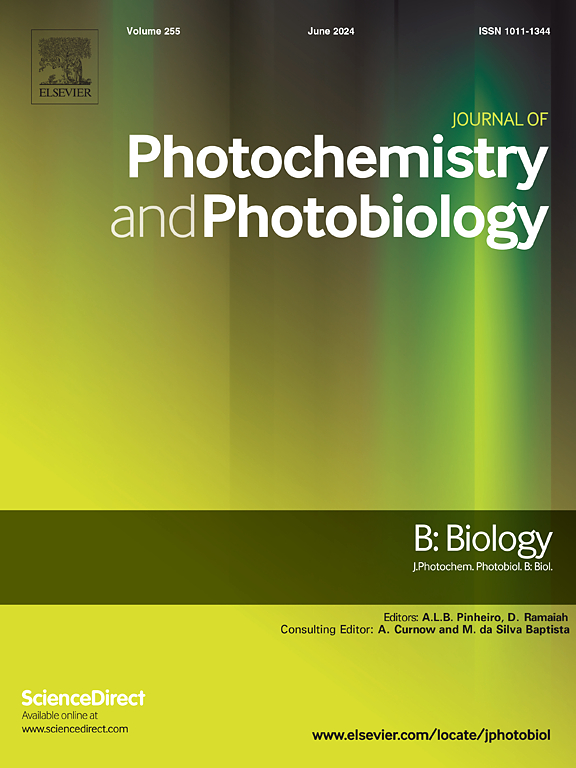作为可激活的 I 型光敏剂的肿瘤 pH 响应型酞菁,可用于改进光动力免疫疗法。
IF 3.9
2区 生物学
Q2 BIOCHEMISTRY & MOLECULAR BIOLOGY
Journal of photochemistry and photobiology. B, Biology
Pub Date : 2024-11-19
DOI:10.1016/j.jphotobiol.2024.113067
引用次数: 0
摘要
开发一种既能实现可激活的 I 型光反应又能释放肿瘤反应性免疫调节剂的简单药物制剂对于推进光动力免疫疗法(PDIT)至关重要。在本文中,我们介绍了一种纳米结构光敏剂(NP5),它能被酸性肿瘤微环境激活,在光照射下产生 I 型活性氧(ROS),并释放出免疫调节剂去甲蒽醌(DMC),用于光动力免疫疗法。NP5 由多功能酞菁分子自组装而成,该分子由 DMC 和酞菁通过 pH 响应酰胺键连接而成。在 pH 值为 7.4 的条件下,NP5 在光照射下产生的 ROS 极少。然而,在 pH 值为 6.5 的条件下,NP5 可以释放 DMC 并同时引发 I 型光反应。体内实验结果表明,NP5 介导的 PDIT 能诱导细胞毒性 T 淋巴细胞的增加和调节性 T 淋巴细胞的减少,从而有效抑制双侧肿瘤的生长。这项研究有望为开发用于缺氧性肿瘤精确PDIT的创新药物提供参考。本文章由计算机程序翻译,如有差异,请以英文原文为准。
A tumor-pH-responsive phthalocyanine as activatable type I photosensitizer for improved photodynamic immunotherapy
The development of a simple drug formulation capable of achieving both activatable type I photoreaction and tumor-responsive release of immunomodulator is crucial for advancing photodynamic immunotherapy (PDIT). Herein, we present a nanostructured photosensitizer (NP5) that is activated by the acidic tumor microenvironment to produce type I reactive oxygen species (ROS) under light irradiation and release the immunomodulator demethylcantharidin (DMC) for PDIT. The NP5 is formed by self-assembly of a versatile phthalocyanine molecule which is composed of DMC and phthalocyanine linked via a pH-responsive amide bond. NP5 produces minimal ROS under light irradiation at the condition of pH 7.4. However, NP5 can release DMC at the condition of pH 6.5 and concurrently trigger type I photoreactions. The results of in vivo experiments indicate that NP5-mediated PDIT induce the increase of cytotoxic T lymphocytes and decrease of regulatory T lymphocytes, which can effectively inhibit the bilateral tumor growth. This work is anticipated to serve as a reference for the development of innovative agents for precise PDIT of hypoxic tumors.
求助全文
通过发布文献求助,成功后即可免费获取论文全文。
去求助
来源期刊
CiteScore
12.10
自引率
1.90%
发文量
161
审稿时长
37 days
期刊介绍:
The Journal of Photochemistry and Photobiology B: Biology provides a forum for the publication of papers relating to the various aspects of photobiology, as well as a means for communication in this multidisciplinary field.
The scope includes:
- Bioluminescence
- Chronobiology
- DNA repair
- Environmental photobiology
- Nanotechnology in photobiology
- Photocarcinogenesis
- Photochemistry of biomolecules
- Photodynamic therapy
- Photomedicine
- Photomorphogenesis
- Photomovement
- Photoreception
- Photosensitization
- Photosynthesis
- Phototechnology
- Spectroscopy of biological systems
- UV and visible radiation effects and vision.

 求助内容:
求助内容: 应助结果提醒方式:
应助结果提醒方式:


